There is the code computes the affine transformation matrix using the library Opencv (it shows how to trasform your trapezoid to rectangle and how to find transformation matrix for futher calculations):
//example from book
// Learning OpenCV: Computer Vision with the OpenCV Library
// by Gary Bradski and Adrian Kaehler
// Published by O'Reilly Media, October 3, 2008
#include <cv.h>
#include <highgui.h>
#include <stdlib.h>
#include <stdio.h>
int main(int argc, char* argv[])
{
IplImage *src=0, *dst=0;
// absolute or relative path to image should be in argv[1]
char* filename = argc == 2 ? argv[1] : "Image0.jpg";
// get the picture
src = cvLoadImage(filename,1);
printf("[i] image: %s\n", filename);
assert( src != 0 );
// points (corners of )
CvPoint2D32f srcQuad[4], dstQuad[4];
// transformation matrix
CvMat* warp_matrix = cvCreateMat(3,3,CV_32FC1);
// clone image
dst = cvCloneImage(src);
// define all the points
//here the coordinates of corners of your trapezoid
srcQuad[0].x = ??; //src Top left
srcQuad[0].y = ??;
srcQuad[1].x = ??; //src Top right
srcQuad[1].y = ??;
srcQuad[2].x = ??; //src Bottom left
srcQuad[2].y = ??;
srcQuad[3].x = ??; //src Bot right
srcQuad[3].y = ??;
//- - - - - - - - - - - - - -//
//coordinates of rectangle in src image
dstQuad[0].x = 0; //dst Top left
dstQuad[0].y = 0;
dstQuad[1].x = src->width-1; //dst Top right
dstQuad[1].y = 0;
dstQuad[2].x = 0; //dst Bottom left
dstQuad[2].y = src->height-1;
dstQuad[3].x = src->width-1; //dst Bot right
dstQuad[3].y = src->height-1;
// get transformation matrix that you can use to calculate
//coordinates of point Pxy
cvGetPerspectiveTransform(srcQuad,dstQuad,warp_matrix);
// perspective transformation
cvWarpPerspective(src,dst,warp_matrix);
cvNamedWindow( "cvWarpPerspective", 1 );
cvShowImage( "cvWarpPerspective", dst );
cvWaitKey(0);
cvReleaseMat(&warp_matrix);
cvReleaseImage(&src);
cvReleaseImage(&dst);
cvDestroyAllWindows();
return 0;
Hope it will be helpfull!
